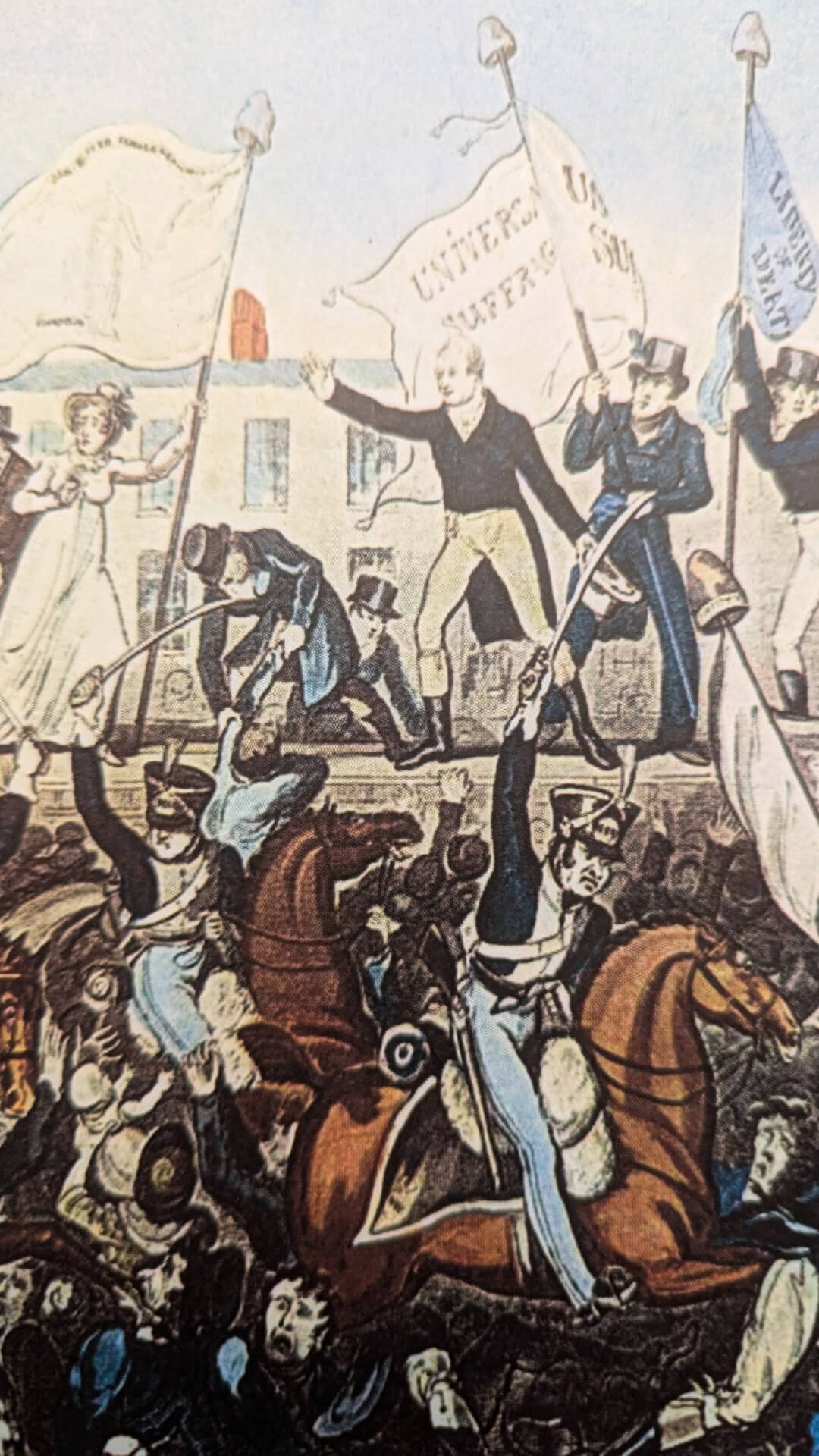PUBLICATIONS
Axoniana - Lucy Evans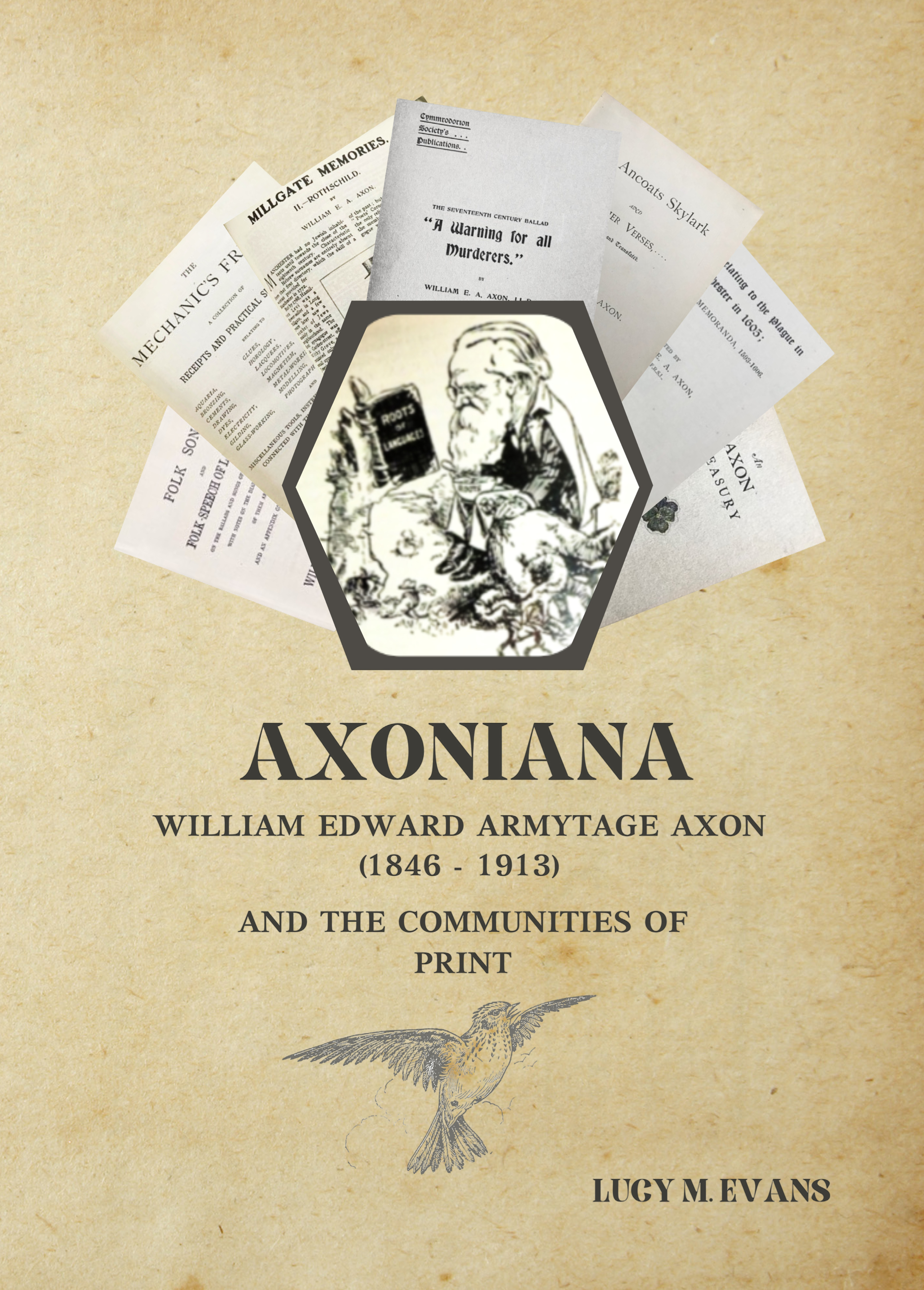
William Edward Armytage Axon, WEAA for short, was once described as ‘One of the busiest men in Manchester.’ He was an obsessional writer, producing an avalanche of books, pamphlets, journal articles, poems, stories, dialect pieces and embarking on a vast network of correspondence. Throughout his life one way or another he made his living from words: as a librarian, commercial secretary, journalist, including thirty years at the Manchester Guardian, and freelance author. Another friend described him as ‘the nicest man in Lancashire.’ He was renowned as a peacemaker in the countless societies he belonged to. Many were grateful for his help, advice and kindness. But the gentle, physically frail WEAA had a core of steel: he believed passionately that vegetarianism, temperance, international brotherhood, humane treatment of animals, education and access to knowledge would eventually transform society. He devoted himself to these causes. The Sunday opening of libraries, galleries and museums owes much to WEAA’s efforts. WEAA is rightly remembered as a Lancashire historian, but this book unfolds a much larger story, populated by a host of characters from his extensive circles of print, reform, family and friendship.
We are happy to say that the ebook version of this new and comprehensive biography is now available to download, courtesy of the author. Just click on the link below.
Lucy M. Evans grew up in Manchester, graduated in English at Birmingham University, dipped into gypsy and folklore studies at Leeds University, and joined the British Library at Boston Spa, eventually qualifying as a librarian. Retirement has enabled her to continue her pursuits of delving into the lives of obscure Victorians. She has previously written about the longevity guru Dr. Maurice Ernest, Andrea Crestadoro, third Chief Librarian of Manchester, and has now produced this biography of his friend and one time assistant, William E. A. Axon.
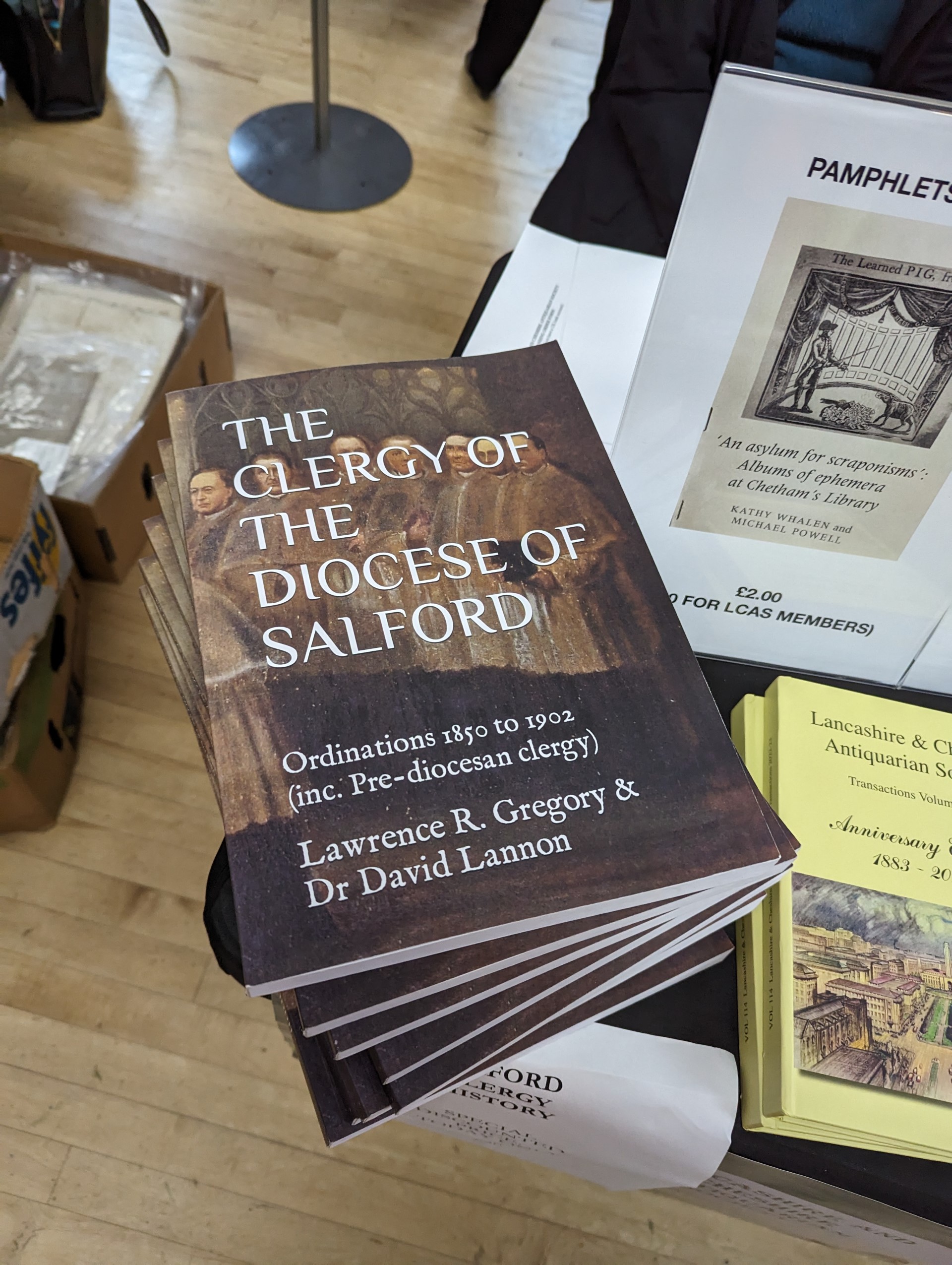
This book was written as a joint venture by Dr David Lannon and Lawrence Gregory, both are members of our Council
Made in Lancashire - Richard Turner
Reduced from £26.99 to £20.00. All you need to do is click on the link and to enter the code LANCS21 when you reach the checkout on the Gazelle website
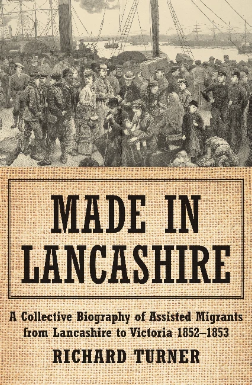
Michael Powell and Terry Wyke, eds., A Bread and Cheese Bookseller: The Recollections of James Weatherley. Chetham Society, 2021, vol 55. £39.95.
There is no reason why we should ever have heard of James Weatherley. Like the vast majority of the poor who lived during the industrial revolution, he should have left only the smallest of footprints in the historical record. He was born in Salford workhouse in 1794 and, 66 years later, would have suffered the public shame of a pauper’s funeral had it not been for the kindness of friends. Weatherley lived in Manchester all of his life, spending many of those years selling second-hand books on the streets, close to the Exchange, on the appropriately named Pennyless Hill.
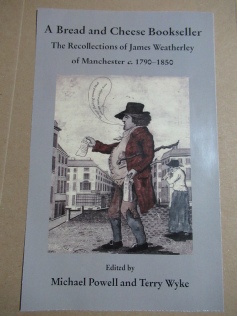
Shortly before his death he was persuaded to write an account of his life. The manuscript was acquired by Chetham’s Library in the 1880s where it has remained unopened and forgotten. It provides one of the very few first-hand accounts of an ordinary working man’s experiences of living through the industrial revolution.
Weatherley, who began working in the cotton factories when a child, was to witness Manchester transformed from a small market town into the ‘the city of tall chimneys’ – a place of extremes that appalled and fascinated observers. When trade was slack in the mills, Weatherley made money by selling Eccles cakes on the streets. Aged 17, he left the mills, having decided to try to make his living selling books on the street. It was to prove a hard and precarious life, but one which was to bring him into contact with the lower reaches of the book trade and its customers - the honest and dishonest.
Fortunately, Jem Weatherley was possessed of an exceptional memory, able to recall the details of not only those who had cheated him out of pennies but also those wider events such as the Peterloo Massacre and other protests that came to define Manchester’s history in the first half of the nineteenth century.
Weatherley is a unique voice. His recollections provide a view of history from the gutter rather than simply history from below.
This new volume edited by the late Michael Powell and Terry Wyke provides the full text of Weatherley’s manuscript.
Michael Powell, Librarian of Chetham’s Library, published on local history, the book trade and bibliography of the Manchester region. He was an active member and supporter of many local societies, including the Chetham Society and the Lancashire and Cheshire Antiquarian Society. He died in 2019.
Terry Wyke taught social and economic history at Manchester Metropolitan University, retiring in 2016. His publications focus on the Manchester region including its bibliography, the cotton industry and public monuments. He was a founder editor of the Manchester Region History Review.
To order copies: www.chethamsociety.org.uk
Lancashire Studies: Historical essays in honour of Alan Crosby
Many Lancashire and Cheshire Antiquarian Society members will know Dr. Alan Crosby well. An unfailingly interesting speaker in a wide range of Lancashire history topics, he has visited societies all across the historic county over a period of many years, The Lancashire Local History Federation has published a volume of historical essays in honour of Alan's 65th birthday. Released early in August, it includes contributions on a number of Alan's favourite topics in Lancashire history together with a biographical introduction, and it is available for purchase from the Federation..
The Age of Machinery: Engineering the Industrial Revolution, 1770-1850
Gillian Cookson
337 pp. Boydell and Brewer, £19.99 paperback. ISBN: 9781783272761
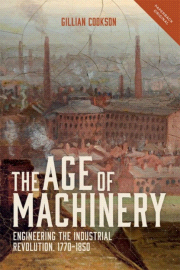
The engineers who built the first generations of modern textile machines, between 1770 and 1850, pushed at the boundaries of possibility. This book investigates these pioneering machine-makers, almost all working within textile communities in northern England, and the industry they created. It probes their origins and skills, the sources of their inspiration and impetus, and how it was possible to develop a high-tech, factory-centred, world-leading market in textile machinery virtually from scratch. The story of textile engineering defies classical assumptions about the driving forces behind the Industrial Revolution. The circumstances of its birth, and the personal affiliations at work during periods of exceptional creativity, suggest that the potential to accelerate economic growth could be found within social assets and craft skills. Appreciating textile engineering within its own time and context challenges views inherited from Victorian thinkers, who tended to ascribe to it features of the fully fledged industry they saw before them. The Age of Machinery is an engagingly written account of the trade in its key northern centres, devoid of jargon and yet tightly argued, equally rich with historical narrative and analysis. It will be invaluable not only to students and scholars of British economic history and the Industrial Revolution but also to social scientists looking at human agency and its contribution to economic growth and innovation.
A review of this book was published in Transactions vol. 111.
Manufacturing the Cloth of the World: Weaving Mills in Lancashire
280pp. Published by the author, £21 paperback.
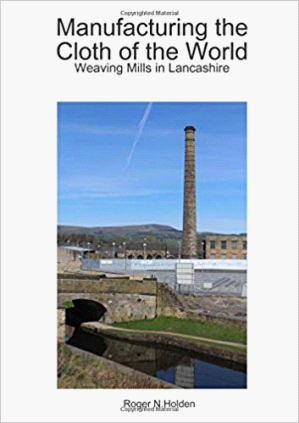
This well illustrated book is the first comprehensive study of the weaving sector of the Lancashire cotton industry to be published. The focus is on the development of weaving mills against the background of the economic development and organisation of the industry. Hand loom weaving was carried out in domestic premises or small workshops. Early power looms were installed in multi-storey mills combined with spinning, the characteristic form of single storey shed with north-light roof used solely for weaving developing later. The construction, power systems and layout of these mills are considered in detail. The book is based on original research looking at both the mills themselves and documentary sources, including plans and company records.
Published in conjunction with this title are Chadderton Mill and Palmer Mills, by the same author. All three books were reviewed in Transactions vol. 111.
Manchester’s Radical Mayor Abel Heywood: The man who built the Town Hall
Joanna M. Williams
256 pp. The History Press, £14.99 paperback, ISBN: 9780750984089
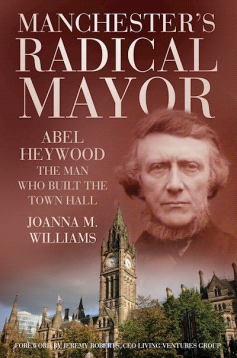
Known in his day as the man who built the Town Hall, Abel Heywood was a leading Manchester publisher who entertained royalty at his home and twice became Mayor of Manchester. Yet before he found success his life was one of poverty and hardship, marked by a prison term in his pursuit of a free press. A campaigner for votes for all and social reform, Heywood attempted to enter Parliament twice, but his working-class origins and radical ideas proved an insurmountable obstacle. As councillor, alderman and mayor, he worked passionately and tirelessly to build the road, railway and tram systems, develop education, improve the provision of hospitals, museums and libraries, better the living conditions of the poor, and make Manchester a great city. Going beyond the experiences of one man, this book explores the wider political, cultural and class context of the Victorian city. It is an honest tale of rags to riches that will appeal to all who wish to discover more about the dramatic history of industrial Manchester and its people.
This book was reviewed in Transactions vol. 111.
Revealing Cumbria's Past: 150 Years of the Cumberland and Westmorland Antiquarian and Archaeological Society
Michael Winstanley (Editor)
368 pp. CWAAS, £15 paperback. ISBN: 9781873124734
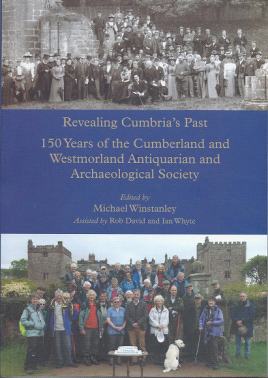
________________________________________________________________________________________________
Landed Estates and Rural Inequality in English History (Palgrave Macmillan, 2018), 139pp. hardback Eric L. Jones
Based on a detailed investigation of local sources, this book examines the history of the landed estate system in England since the mid-seventeenth century. Over recent centuries England was increasingly occupied by landed estates run by locally dominant and nationally influential owners. Historically, newcomers adopted the behaviour of existing landowners, all of whom presided over a relatively impoverished mass of rural inhabitants. Preferences for privacy and fine views led landowners to demolish or remove some whole villages. Alongside extensive landscape remodelling, rights-of-way were often privatised, imposing a cost on the economy.
Social and environmental implications of the landed system as a whole are discussed and particular attention is paid to the nineteenth-century investment of industrial profits in estates. Why was the system so attractive and how was it perpetuated? Matters of poverty and inequality have always been of perennial interest to scholars of many persuasions and to the educated public; with this important book surveying environmental concerns in addition.
This book was reviewed in Transactions vol. 111.
Lancaster in the Great War (Towns and cities in the Great War Series)
John Fidler
116 pp. Pen & Sword Books, 2016. Paperback £9.99 (Kindle and ePub versions £5.99) ISBN 9781473846111
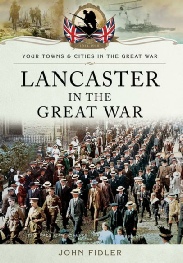
Although Lancaster was the ancient County town, it had a population of only 40,000 in 1914. Of these, it is thought that some 5,000 men saw war service between 1914-18, and over 1,000 did not return. In consequence, the recruiting drives, the tribunals to consider exemption from 1916, and the ever-growing casualty lists provide the main theme for this book.
Some 3,000 men had volunteered by December 1914, to join those already serving. While the depot of the King’s Own Royal Lancaster Regiment was in the town, about eighty regiments had Lancaster men in their ranks, and both the casualty lists and the awards for gallantry reflect this.
The town was out of range for shelling from the sea, or aerial bombardment, but did experience an explosion at its munitions factory in 1917. Apart from this, the mayor and council endeavoured to continue with their primary duties as far as possible in running the town.
A review of this book was published in Transactions vol. 110
Angel Meadow: Victorian Britain’s Most Savage Slum
Dean Kirby
196 pp. Pen & Sword Books Ltd, 2016. ISBN 9781783831524, paperback £14.99.
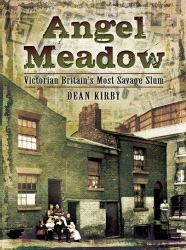
Angel Meadow: an innocuous name for an iniquitous area. Dean Kirby details the origin of the name and relates many astonishing, but accurately-researched stories in his pacey, page-turning book. The publisher's cover copy sets the scene:
'Step into the Victorian underworld of Angel Meadow, the vilest and dangerous slum of the Industrial Revolution. In the shadow of the world's first cotton Mill, 30,000 souls trapped by poverty are fighting for survival as the British Empire is built upon their backs.'
Special offer: available to our members at 25% discount, with free postage in the UK! Just ring the publisher on 01226 734222 or use their website checkout and enter the voucher code 668712.
A review of this book was published in Transactions vol. 110
The Irish in Manchester c.1750-1921: Resistance, adaptation and identity
Mervyn Busteed
286pp. Manchester University Press, 2016. ISBN 9780719087196; hardback £75.
Mervyn Busteed examines the ways in which Irish immigrants to nineteenth-century Manchester strove to preserve and express their distinctive identity in the first British city to undergo the industrial revolution. Using extensive archival sources, the book analyses how historic anti-Irish prejudice was renewed by making the Irish the scapegoats for the ills of industrial development, and the strategies they devised to cope with an alien and hostile situation.
A review of this book was published in Transactions vol. 110
Blitz Britain: Manchester and Salford
Graham Phythian
The History Press, 2015. ISBN: 9780750961578; £12.99
In 1940, the Manchester and Salford Blitz saw the city and its surroundings targeted by the German Luftwaffe. The most destructive attack was launched in late December 1940; it is remembered today as ‘the Christmas Blitz’. Nearly 800 people lost their lives, and thousands more were injured, in two nights of raids ending with a devastating Christmas Eve that saw hundreds of tons of high explosive and thousands of incendiaries fall. Attacks continued into 1941 and beyond, and landmarks such as the cathedral, the Free Trade Hall, the Royal Infirmary and the Royal Exchange were all to suffer.
Manchester: The Making of the Modern City
Edited by Alan Kidd and Terry Wyke
Liverpool University Press, June 2016. ISBN: 9781846318788; paperback £14.99. 9781846318771 hardback £35.00

This book is available at a generous discount from the publisher: £10.00 paperback and £30 hardback (plus P&P). Just fill in this order form.
Every town and city has its story, but few have a history that is essential to understanding how the modern world was made. Manchester was the first industrial city and arguably the first modern city. During the industrial revolution it became the centre of the world's trade in cotton goods, so associated with that product that it was known as ‘Cottonopolis’.
In the nineteenth century Manchester was recognised across the globe as a symbol of industrialism and modernity. It was one of those iconic cities that came to stand for something more than itself. Its global reach stretched beyond industrialism as such and encompassed the political and economic ideas that the industrial revolution spawned. Manchester was simultaneously the home of the capitalist ideology of Free Trade (famously naming its chief public building in honour of this idea) and the place where Marx and Engels plotted the communist revolution.
The history of modern Manchester opens doors to an understanding of how science helped shape the modern world from the discoveries of Dalton and Joule to Rutherford’s splitting of the atom, the first stored-program computer and the invention of graphene. But Manchester has also been home to sporting and cultural achievements from the prowess of its football teams to its media presence in television. The city has been the venue for the expression of numerous voices of protest and affirmation from the Peterloo demonstrators in 1819 to the Suffragettes nearly a century later and the Gay protests of more recent times. It has always been a cosmopolitan city with a lively mix of ethnic groups that has added celebration and tension to its cultural and social life.
Over time the population growth in and around Manchester generated an urban sprawl that became a city region. ‘Greater Manchester’ has been a reality for over a century and along with Greater London is the only metropolitan region to be named after its core city. As the industrial base on which the city and region had depended for two centuries collapsed in the later twentieth century the city had to take a new path. This it has done with remarkable success and twenty-first century Manchester is recognised as the post-industrial city that has been most successful in reinventing itself.
Appreciating how this has happened is as much a key to understanding Manchester as is knowledge of its past greatness. Written by leading experts on the history of the city and with numerous insights and unexpected stories, this profusely illustrated book is essential for an understanding of what Manchester has been and what it can become.
A review of this book was published in Transactions vol. 110


